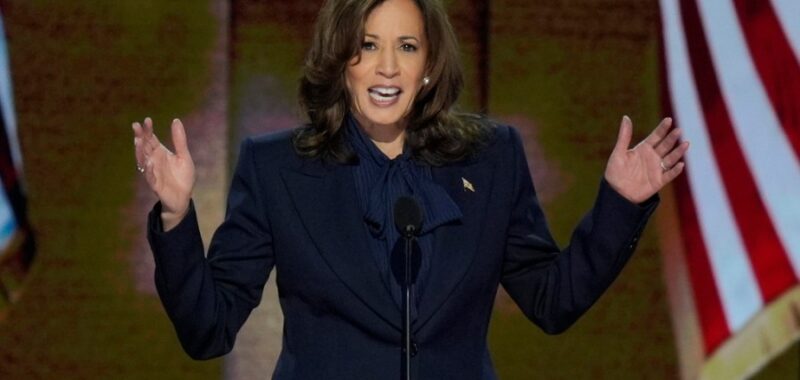
The fall campaign has begun in earnest, and the presidential race is still tight, according to swing state polls conducted for The Hill between Aug. 23 and 28. The big question is: Why the race still so close?
In the short time Vice President Harris has been the designated Democratic nominee, she solidified her party’s base, raised a ton of dough and selected a popular running mate. Meanwhile, former President Trump bumbled and stumbled his way through the summer with incoherent campaign rhetoric, a divisive running mate and defections by prominent Republicans. Former Sen. Pat Toomey, from the swing state of Pennsylvania, and former Wyoming Rep. Liz Cheney, the daughter of Vice President Dick Cheney, are the latest Republicans to express their intentions to not vote for their party’s nominee.
Harris and her running mate, Minnesota Gov. Tim Walz (D), have been crisscrossing battleground states while Trump has hunkered down in Mar-a-Lago.
You would like to think that Democratic energy and enthusiasm would have produced a big blue wave, but it isn’t so. The race is still close in the seven swing states on the front lines of the electoral combat zone. Either party can win simply by mobilizing its base. But neither can dominate without having broad support across voting blocs. The next president needs a large public mandate to advance her or his agenda. Neither candidate is likely to own one after Election Day.
The winner will have to deal with a closely divided Congress, which will make it difficult for Harris to deliver on her campaign promises.
The Democratic nominee wants higher taxes on bankers and billionaires to pay for tax cuts for hard working and financially strapped middle-income families. That proposal would be dead on arrival in a Congress where the GOP controls one or both houses.
The deep divisions in American politics prevent either party from gaining much of an advantage in politics or a mandate for policy.
The great racial and gender divides that afflict our democracy are well known. But one of the deepest fissures in the body politic is the difference between college-educated white voters and white voters who don’t have a four-year diploma.
In 2020, each of these two groups constituted about one-third of the electorate, but they made significantly different choices. The stark discrepancy between these two voting blocs illustrate the divisions in America that are as wide and deep as the Pacific Ocean.
Seven out of ten non-white voters supported Biden regardless of education level. A small majority of the college-educated white voters supported Biden. Two of every three white voters without a college degree went for Trump.
Progressives such as Sen. Bernie Sanders (I-Vt.) hope to build a biracial populist majority to battle corporate domination of politics and policy and enact Medicare for All and a living wage.
The voting inclinations of white voters without college degrees presents a serious obstacle for progressive populists. In 2020, Americans in that category living in households where the total income was less than $50,000 a year, overwhelmingly supported Trump over Biden. It would be easy but inaccurate to describe these Trump supporters as “rednecks.” In fact, most of them live in cities and suburbs.
Low-income white voters would benefit greatly from a progressive populist agenda. So why do they vote against their own economic interests?
The answer is that these low-income white voters, who lack a college education, are social conservatives. A clear majority of these voters were opposed to abortion in all or most cases and a plurality of them disliked the Black Lives Matter movement in the last presidential election.
Trump goes out of his way to exploit the conservative social tendencies of these voters to keep them from backing Democrats. His racially-tinged rhetoric is especially potent in a contest against a Black opponent. It is the reason the contest is still close, despite all of Harris’s momentum.
The social and racial views of low-income white voters have undermined the movement for progressive economic populism throughout our history. For Harris to be a successful candidate and president, she must overcome social and racial divisions that stand in her way.
The way for her to proceed and succeed is to go big on populist economic proposals that will make it clear that Democrats alone share the hopes and dreams of low-income voters of all races.
Expect a close contest on Election Day. But don’t expect groundbreaking movement on progressive economic initiatives as long as low-income white voters vote their social prejudices instead of their economic interests.
Brad Bannon is a Democratic pollster, CEO of Bannon Communications Research which polls for Democrats, labor unions and progressive issue groups. He hosts the popular progressive podcast on power, politics and policy, Deadline D.C. with Brad Bannon.

